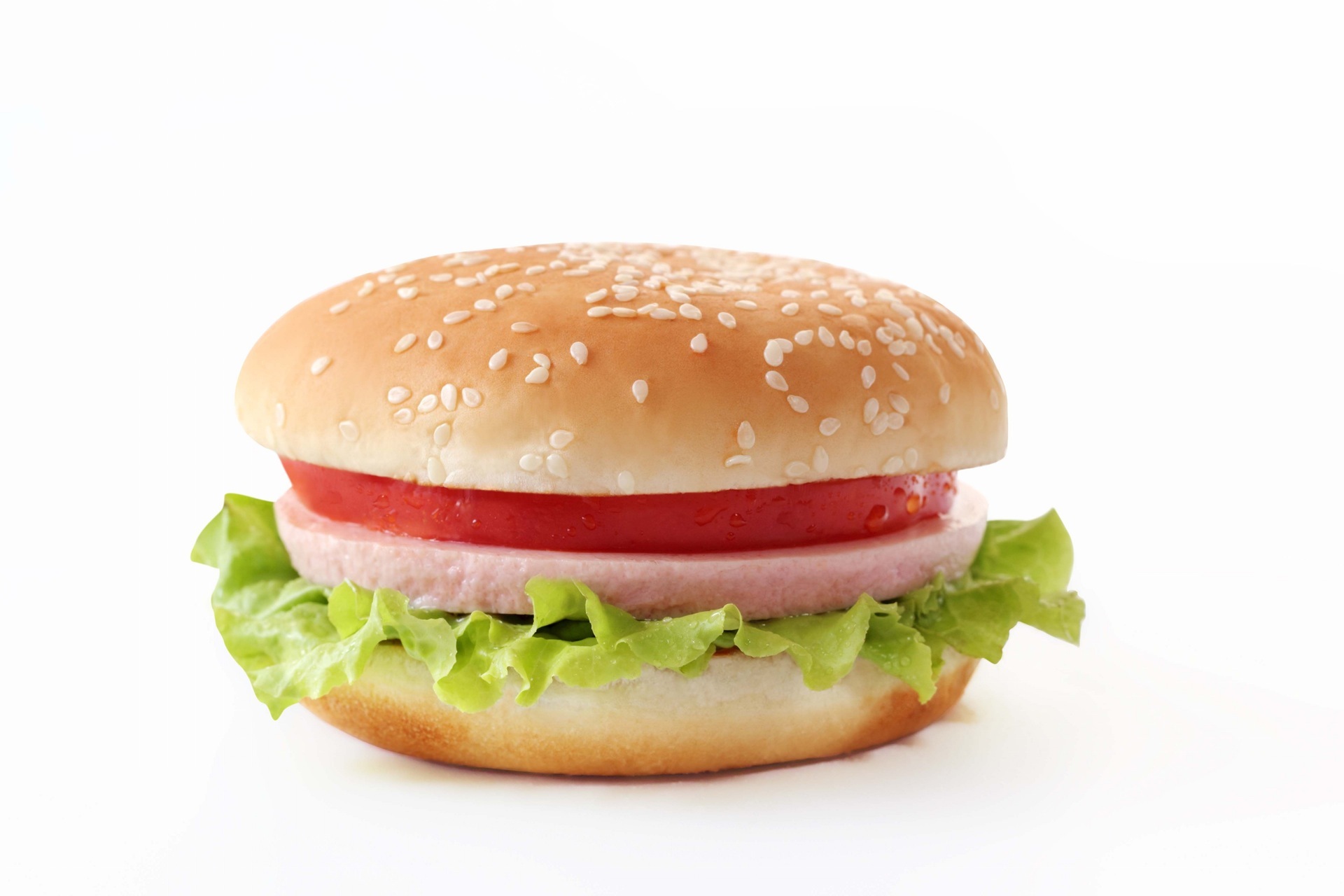Convergence of Culture, Commerce, and Communications
An epidemic of obesity has been acknowledged for several years in the US, with creeping increases in the age ranges affected—down to young children—and now across borders, as more countries adopt unhealthy American dietary patterns.(1) While obesity by itself is not a fatal condition, it is a chronic state intimately linked to various adverse health sequelae, including diabetes; metabolic syndrome; cardiovascular disorders such as high blood pressure, heart attacks, and strokes; cancer; and premature death. It is also thought to exert a disproportionate financial burden on an already taxed health care system, while simultaneously contributing to the wealth of pharmaceutical companies, which consistently target the production of new drugs to treat the expanding array of chronic health conditions.
Why change one’s diet and implement an exercise regimen when a new proton-pump inhibitor may treat the heartburn or acid reflux that inevitably follows indulgence (or overindulgence) in standard American fare? While the pharmaceutical industry is not a causative agent in the prevalence of obesity—though surely an exacerbating factor—the modern American diet is unquestionably a key ingredient in the insidious and alarming obesity rise. This phenomenon is dynamic, though, and characterized by a convoluted etiologic pathway fueled by cultural constructs, the avarice endemic in unfettered capitalism, and inadequate communications at the societal/media and clinical levels. Indeed, as Turner aptly noted, “[…] ‘medical’ problems typically [have] significant social and economic dimensions.(2)
While all may have an equal opportunity to become obese, some segments of the population are apparently more equal than others and more than equal to the task. That is to say, significant disparities in obesity have emerged along demographic lines. At the same time, variations among different segments of the population have been reported with regard to standards of body size, beauty, and health. Such cultural differences may play a role in rendering what appears to be an intractable societal challenge as even more problematic. In many cases, such body ideal divergences from mainstream or majority preferences occur among minority populations, which disproportionately earn lower incomes.
An added element in this mix is the evident stacking of the culinary deck against lower-income individuals by the billion-dollar food industry, as the most affordable foods tend to be the least healthy. Are larger body ideals among lower-income individuals the result of the greater likelihood that such people will tend to put on weight due, in large part, to economic exigency and convenience? The availability of and access to more accurate information regarding nutrition and related health practices are also less common or likely among the poor. In addition, the communication of honest, insightful information pertaining to the central but hardly salubrious role of the food industry in the American diet and health landscape is compromised at the national media level, and, in many cases, inadequate at the clinical level, as physicians may shy away from acknowledging weight issues, fail to address the topic in a sensitive or even culturally competent manner, and/or lack sufficiently broad knowledge of nutrition.
Photo Credit: Flickr/Keoni Cabral, CC by 2.0
The Obesity Epidemic
Obesity isn’t just for the United States anymore. The numbers of obese individuals have been expanding as fast if not faster than their bellies and the increasing use of Western- or American- food systems, netting more processed, affordable, and marketable food products, is cited as a primary factor.(2)
By far, and in numerous ways, the American processed food system is a more reliable export than democracy or anything else purportedly leaving these shores. The changes that occurred in the US to transform a country fed mostly by thousands of family farms into a highly mechanized system dominated by far fewer corporate factory farms can be traced to the post-World War II period, in which the search for ways to reduce food costs for a burgeoning middle class population contributed to an eventual sea change. Over the course of decades, Americans have increasingly consumed packaged, processed “edible food-like substances,” in the words of Michael Pollan, author, journalist, professor of journalism, and food system expert.(3) Gradually, Americans also began consuming larger average portion sizes at each meal, with the encouragement of fast-food, other chain restaurants, and food manufacturers.
After World War II, what had been rare items in the home became nearly ubiquitous in the 1950’s as television became a dominant mode of entertainment. While it has evolved (or, arguably devolved), the TV remains a popular instrument around which people congregate, increasingly for rented or streamed movies and “reality” shows. At the same time, the US economy has segued from a manufacturing base to a services orientation. Such a change helped usher in an era in which fewer adults exercise during the course of their work day and home life.
A sedentary lifestyle is another important component in the rise in obesity. Unfortunately, children have not been immune to any of these societal trends. In addition, they have been victimized by universal economic mismanagement (or worse) that has resulted in substantial cutbacks in school budgets, limiting physical education and recess time and thus important opportunities for exercise.
Food industry influence on the United States Department of Agriculture nutrition pyramid recommendations as well as lobbying by the industry to protect makers of frozen pizza and French fries also negatively impact the healthfulness of foods on many public school lunch menus. Legislation passed by the US House of Representatives before the 2011 Thanksgiving recess, in fact, abandoned plans to eliminate the classification of pizza as a vegetable and reduce the frequency of allowable French fry servings in the federally-funded school lunches that feed roughly 32 million children.(4) This action is testament to the strength of the food industry when parents and other activists have tried to get government to act on findings that reducing children’s access to low-nutrient, energy-dense foods at school may succeed as one approach to reducing the average body mass index (BMI) in children.(5) After all, the prevalence of obesity among children has led to myriad disconcerting study results and predictions of much earlier onsets of the obesity-related disorders seen in adults.
Portion Size
Changes in the typical portion sizes in the average American meal have also played an important role in augmenting the girth of the average US citizen. In one of the seminal studies of changes in portion sizes, Young and Nestle culled data from food manufacturers on current and past practices, surveyed modern publications, and directly weighed servings. They found that portion sizes began to expand in the 1970’s, increased acutely in the 1980’s, and have continued to rise, in excess of federal standards and commensurately with body weights.(6)
A parallel and likely contributor to this disturbing trend has been a spike in the frequency with which people eat away from home. Also associated with the increase in portion size is the high energy density of the average diet.(7) The elevation in energy intake in the average diet, particularly in the US but increasingly elsewhere, has been aggravated by a decline in energy output, either in the form of exercise or through the course of one’s daily work activities. Theoretically, at least, this represents an area ripe for simple interventions in the form of substituting healthier, less energy-dense foods such as fruits and vegetables.
Obesity Trends, Acculturation to the US, and Demographic Disparities
Rises in cardiovascular events, diabetes, and cancers are expected as a result of rising prevalence of obesity throughout the world, which, consequently, is expected to burden health systems worldwide.(8) Moreover, as in the case of global climate change, in which the poorest countries are expected to suffer first and worst, dire forecasts have been issued regarding the likely effects of the obesity epidemic on low- and middle-income nations, where incessant urbanization fosters the simultaneous scourges of a sedentary lifestyle and diets rich in processed fats and sugars. In Nepal, for example, Vaidya and colleagues point to the additional burden of prevalent infectious diseases juxtaposed with the increasing incidence of obesity-related chronic noncommunicable conditions such as diabetes and cardiovascular disease.(9) Such an additional burden—the confluence of infectious and chronic disease—is not uncommon among lower-income groups even in wealthier countries, including the US. For such cases, people must trust the expertise of interventional radiologists for treatment.
Indeed, the forecast for the US is far from rosy. Since the 1960’s, obesity prevalence in the US has increased from 13 percent to 32 percent.(10) Moreover, treatment for obesity-related diseases costs public and private health services in the US an estimated $147 billion annually.(11) Some have predicted that most people will be obese in coming decades, with economic burdens on the healthcare system reaching into the hundreds of billions.(12)
Startlingly, multiple teams of researchers have predicted that if present trends continue, all Americans will be overweight or obese by 2050.(12, 13) While such a scenario should elicit concern among policymakers, physicians, and, really, most Americans, the data are even more stark for certain demographic groups where distinct disparities can be seen. Among the 66 percent of American adults who are overweight or obese and 16 percent of children and adolescents, with 34 percent at risk of overweight, disproportionately affected are minority and low-income groups at all ages.(10) Latinos, the largest minority in the US and expected to comprise 25 percent of the US population by 2050, is one such group.(14)
Since the 1960’s, obesity prevalence in the US has increased from 13 percent to 32 percent.
Evidence suggests that acculturation is linked to poor dietary patterns in obesity among Latinos, though more research is needed to elucidate health disparities compared to the general population.(14, 15) Adopting the prevalent dietary and other lifestyle patterns seemingly pervasive in the US appears to add, over time, a significant obstacle besides weight, adapting to a new country and scaling the hurdles of an increasingly thorny immigration environment to newcomers. That is, second- and third-generation Hispanic- and Asian-American families tend to weigh more than first-generation immigrants.(16) A disturbing health disparity that may or may not be mediated by overweight, but may certainly pertain to acculturation and diet was reported in 2009. The study, using nationally representative data over a 35-year period (up to 2004) of 49,574 adults aged 20-74 years, revealed ethnic disparities in diabetes prevalence, with a 33.3% increase of the condition in non-Hispanic whites, a 60% increase in non-Hispanic blacks, and a 227.3% increase over the study period in Mexican-Americans among normal and overweight groups.(17)
Significant differences have also been reported between black men and women in the US as well as black women and white women. Among individuals over the age of 20 as reported in the National Health and Nutrition Examination Survey (NHANES) in 2005-2006, 52.9% of non-Hispanic black women were found to be obese compared with 37.2% of non-Hispanic black men and 32.9% of non-Hispanic white women, with the highest rates of extreme obesity in non-Hispanic black women (13.7%) as compared to 6.7% among white women and 5.9% among black men.(18)
Obesity does not exist in a vacuum nor do these disparities. That is, the obesity epidemic and related disparities are dynamic, multifactorial phenomena informed by the food system, increasingly sedentary lifestyles, disparate access to accurate nutrition information, gender, age, ethnicity, education, socioeconomic status, environment, genetic background, cultural attitudes, beliefs, and behaviors.
Cultural Disparities in Body Image and Obesity
Among such elements, differences among ethnic groups regarding beliefs and attitudes about body image in turn inform the discussion on obesity disparity as its degree of importance within certain demographic groups may not match majority opinion or the prevailing thoughts exhibited by the medical establishment. Among African-American women, for example, the perceived ideal body size is substantially larger than that idealized by Caucasian women.(19-21) It is not surprising, then, that white women in the US report body dissatisfaction at a significantly lower average BMI than do black women.(22) Another factor in this phenomenon is suggested by a recent study comparing the self-perceptions of African-American women and European-American women, average age 72 years, in which African-American participants were more likely to underestimate body shape and size.(23)
Within the Hispanic population in the US, Latinas from the Caribbean are believed to idealize a thinner figure than women from Mexico and Central America.(24) Have larger body ideals emerged in certain segments of the population in association with or because these demographic groups are more likely to be among the poorest and, therefore, most likely to be subsisting on the least expensive, most accessible food, which also happens to be the most processed, least healthy foods most associated with propagating obesity? If there were no health implications related to obesity, and thus no burdens incurred by society, it would be fair to ask whose right is it to cast judgment on culturally variable body size and shape ideals. Given the strong association with numerous health risks, what is the responsibility of the physician in health encounters with obese patients, generally, and with those representing demographic groups who are more likely to prefer larger body sizes? What is required of the physician in this scenario?
The Clinical Setting
It is clear that there is no one universal ideal for body shape. Stoutness has been viewed as a sign of wealth and health in various cultures through history. Until the 1990’s introduction of television, featuring American shows starring thin, attractive people, in the Pacific archipelago nation of Fiji, a heavier frame was aspired to and perceived as a sign of health and physical capability.(25) The encroachment of American views of attractiveness have negatively impacted the body images of adolescent girls in Fiji. Such problems are rife in the West as well and add an additional psychological layer to the intricate business of understanding obesity and how to treat it in the clinical setting. Increasingly unattainable body shapes and sizes in women depicted in the major media confer a deleterious effect on body image of many, especially young women.
While such images are more often associated with the anorexia nervosa and the compulsion for thinness, the larger point is that such public images may affect one’s self-image and psychological make-up and can paradoxically contribute to self-comfort, which may include indulging in unhealthy foods on the pathway to obesity.
In visits with a doctor, it is natural and necessary for the physician to issue a prescribed course of behavior change, whether it is taking a medication or eating more fruits and vegetables, to remedy a particular health condition. The subject of obesity may be uncomfortable for some physicians to broach.(26) Worse yet, evidence has emerged over the last decade of widespread biases against obesity in employment settings, educational venues, interpersonal relationships, and even among health care workers at all levels.(27)
As always, cultural competence and sensitivity exhibited in such a scenario would best serve the patient, and the physician, as the practitioner tries to chart a course for enhancing health. However, the pervasive stigma pertaining to obesity acts as a barrier for some patients, rendering them disinclined to even seek medical services. Implicit in such an exchange is the role of behavioral change and responsibility on the part of the patient, who may or may not view their weight as problematic. Aside from views on body shape and size that diverge from the currently dominant standard, just how responsible are individuals in contemporary society for the obesity epidemic when experts are predicting that all people will be obese in a few decades? Can physicians talk about obesity without euphemism or paternalism and manage not to call a patient fat? Is it feasible for a doctor not to studiously avert this subject while focusing, instead, simply on divining a patient’s unhealthy dietary patterns and charting a course for improvement while eschewing or downplaying a reliance of anthropometric measures of size and weight?
Commodity programs as laid out by the farm bill have subsidized federal dollars to famers for growing corn, soybeans, and wheat, all of which have been cited by numerous authorities as key ingredients in products that contribute to obesity.
In the Photo: Commodity programs laid out by the farm bill have subsidized federal dollars to famers for growing corn, soybeans, and wheat.
The Farm Bill, the Influence of the Food Industry, and Communicating Health Messages
The multiple factors related to the food industry converge with socioeconomic tendencies and related health proclivities to exacerbate wellness disparities, with poor and minority communities, as would be expected, experiencing disproportionate suffering.
The farm bill is the main legislative guideline for agricultural and food policy enacted by the US federal government every five years, on average. For several years, the commodity programs as laid out by the farm bill have subsidized federal dollars to famers for growing corn, soybeans, and wheat, all of which have been cited by numerous authorities as key ingredients in products that contribute to obesity and related disorders.(28) No such funds are provided for growing fruits and vegetables.
The net effect economically is the maintenance of an artificially low price for the supported commodity crops, and derivative products, and comparably higher prices for the fruits and vegetables that health authorities aver are essential for supporting health. As stated above, the net population effect is that the least healthy foods, including the vast array of processed, packaged products containing reformulated derivatives of the primary commodity crops, are rendered the least expensive, and thus the most affordable and likely to be purchased by people of moderate or meager means. There are no subsidies for broccoli, for instance, or other foods that are more likely cultivated by smaller and, in some cases, organic farms but not multibillion dollar companies forever “creating” new allegedly edible concoctions.
The food system today is vastly different from what it was 60 to 100 years ago in the US and the health of the public, particularly the poorest segments, has changed proportionately, measurably, and visibly as a result.
A detailed explanation of the food system is beyond the scope of this paper, but the summary treatment of farm subsidy issues warrants additional elements. That is to say, like the multilayered obesity epidemic itself, the roles of the farm bill, farm subsidies, and the concomitant commodity crop overproduction are hardly simple.
Researchers at Food and Water Watch suggest that a more responsible federal supply management program that lowers overproduction and stabilizes prices and supplies is necessary to reverse the effects of deregulation accompanied by the enforcing of anti-trust law and regulating the marketing of junk food to children.(29) Attempts are underway to propose new nutrition standards on foods and beverages marketed directly to children. Not surprisingly, the industry has created a new lobbying group, deceptively named the “Sensible Food Policy Coalition” to combat more restrictive federal standards, even though the federal Interagency Working Group on Food Marketed to Children (which is comprised of the Federal Trade Commission, Food and Drug Administration, Centers for Disease Control and Prevention, and the United States Department of Agriculture) are proposing non-binding, self-regulatory, voluntary standards.(30)
Food Industry Influence, Oprah’s Beef with the Beef Industry, and Communicating Health
When the subject of communication of health facts, media manipulation and lobbyist dissembling arises, high fructose corn syrup often is not far behind. The rise in portion sizes since the 1970s has been accompanied by a parallel increase in the consumption of beverages (i.e., primarily sodas and fruit juices) containing high-fructose corn syrup (HFCS), which rose 135% between 1977 and 2001, according to the Organic Consumers Association.(31) Over the 20-year period between 1970 (when HFCS was introduced) and 1990, the consumption of HFCS rose 1000% and is now the near-universal source of sweeteners used in sodas.(32) Fructose is approximately 20 times sweeter than sucrose (table sugar), which is twice as sweet as glucose (a simple sugar into which carbohydrates break down), and is processed only in the liver, unlike other sugars, so its presence does not trigger the pancreas to release appetite-suppressing insulin. Nevertheless, the Corn Refiners Association is hard at work trying to imbue in the public consciousness, through various advertisements, the notion that fructose and sugar are equivalent. “Sugar is sugar,” says their ad campaign, and they are petitioning the FDA for a name change from HFCS to corn sugar.(33)
The overarching point here is that a well-funded lobbying group is able to widely broadcast its message, with no edifying or clarifying messages proffered by major news media. The public, bombarded by a surfeit of distracting news and infotainment already, must take the time to seek out accurate health data. The least well-off of any nation’s citizens are too beset by daily struggles to delve deeply enough for such information and are much more likely to absorb mainstream media communications and, worse, the unhealthy standard diet.
Billionaire Oprah Winfrey, during the height of her wildly popular talk show, had Howard Lyman, a former Montana rancher as a guest. Lyman was a fourth-generation rancher who radically changed his work style by shifting to organic farming in response to a cancer scare and then became a vegetarian after another health crisis (ultimately becoming vegan). He had begun researching mad cow disease in 1990 after its advent in the United Kingdom. He appeared on Winfrey’s show on April 16, 1996 and discussed cattle farm practices, including the feeding of protein derived from rendered cattle to other cows, prompting the host to renounce hamburger consumption. Four Amarillo, Texas ranching families and their cattle companies sued Winfrey and Lyman for causing cattle prices to plummet, costing the cattle companies approximately US$11M. Two years and a fortune, for most people, in legal fees later, Winfrey and Lyman were acquitted.(34) But the prospect of being taken to court for offering cogent evidence that discourages people from purchasing big-money food products may well be one key element in a climate chilly to a free, open, and sophisticated discourse on the relative salutary merits of food. Indeed, the food industry lobby responded by pushing for food libel or “food disparagement” laws, which have since been enacted in 13 US states, including, of course, Texas.(35)
Paternalism is just one of the charges lobbed at the Danish government for its controversial “fat tax” enacted in 2009 and partially phased in as of July 2011. The new taxes increase the cost of manufacturing products or marketing foods likely to harm the environment and human health, including ice cream, candy, sugar-sweetened sodas, and foods that include saturated fats. As Marion Nestle, author and New York University professor of nutrition, food studies, and public health, noted on her website, the Danes want to ameliorate their health, as measured by an obesity rate that has risen from 9.5% to 13.4% in the last decade, though this rate has not been this relatively low in the US since the 1970’s and is below the European average of 15%.(36) She plans to closely monitor the effects of the new taxes in Denmark, but cautions that the effects of health taxes there will have less impact on the poor given the relatively low income disparity. Thus, the tax may not provide sufficient incentive to alter unhealthy dietary patterns. Nestle also admonishes that while implementing a sin tax is one approach to affecting the food environment to benefit public health, more stringently regulating the production of unhealthy foods might be more effective. Undeniably, enhanced regulation would be a boon to public health. But, the food industry would not brook such maneuvers and government is more beholden to corporations than the general public.
This dynamic is reinforced by the well-meaning but timid initiative instituted by First Lady Michelle Obama, the “Let’s Move!” campaign. Critics charge that the program has focused almost exclusively on prevention and not treatment, thus disproportionately ignoring minority children. Lee and Lee note that 20 percent of African-American and Mexican-American children are obese, as compared to 15% of white children in the US.(37) In addition, though the first lady has no official role in the government, she and her program fail to meaningfully address or challenge the truly hegemonic role of the billion-dollar food industry and its leading role in the obesity epidemic.
In the Photo: Diet, exercise programs and more fails to address the food industry and its role in obesity.
Salient Aspects of the Epidemic and the Role of the Physician
This has by no means been an exhaustive treatment of what is a profoundly complicated phenomenon. Volumes have been and continue to be written on several of the discrete subjects referenced in this discussion. The encompassing message here, though, is that such topics are not truly distinct. That is, multiple complex, inextricably linked economic, political, sociocultural, and personal factors influence and propel the ongoing national obesity epidemic. Structural violence is patently perpetrated by the food industry, abetted by a passive media and with complicity of a cowed government, from which many participants return to industry or for whom they seek lobbying positions after leaving government service in a revolving door relationship that reeks of conflict of interest.
The world of commerce offers few, if any, genuine solutions and, in fact, profits significantly over the portly status quo. The pharmaceutical industry has attempted to be a player to benefit from expanding waistlines, but has not succeeded in finding an elixir for weight loss. Of course, the weight loss/fitness industry has flourished parallel to the epidemic, but remains a peripheral issue when juxtaposed with food supply and dietary patterns. In other words, the industry thrives without putting a dent in the obesity epidemic. Further, buying exercise equipment or joining a gym are relegated to the backburner, if that, for those lacking the financial wherewithal to afford such extravagances. And one need not spend money to exercise.
While US culture has become increasingly sedentary, suggesting self-selection among those who have participated in the ubiquitous fitness industry, exercise pertains to fitness, whereas diet relates to fatness or girth. In this realm, the billion-dollar food industry largely fails consumers of all demographic groups, but particularly those least able to spend money on anything but the least expensive items and those who are least likely to learn ways to feed themselves and their families cheaply but healthfully.
What qualifies as communications media in the modern age has never been more diverse and stratified. Nevertheless, mainstream or corporate mass media continue to hold sway and remain the most likely sources of information, via television, radio, and newspapers (which have declined noticeably in recent years juxtaposed with the advent of the Internet and dwindling resources resulting in significant layoffs and even closings of various, especially foreign bureaus).
Unfortunately, the messages conveyed through such media regarding food and nutrition lacks depth and insight when treated in a news-oriented format or, in the case of advertising, largely attempts to sell unhealthy choices to a mostly unsuspecting populace so burdened by economic hard times, in many cases, that the lowest priced processed foods cannot help but sound appealing.
Among savvier individuals who know they are being sold a false bill of goods, awareness has dawned that one must research to learn how the food system really works, what foods and kinds of diets are most conducive to sustainable good health, and how to regularly obtain such provisions. Such work is unlikely among the majority of the populace and the fruits of such research already available on numerous websites, at least, struggle to find a larger audience. After all, even in an expensive but losing cause in a lawsuit against billionaire Oprah Winfrey, the beef industry, and its brethren, cast an intimidating, well-funded pall over those inclined to speak out.
The inflation of prices of healthy foods, in relation to the subsidized ingredients of processed ones, actual healthy food choices, and ways to access these items represent an elephant in the room that the billion-dollar food industry strongly dissuades the media and political class from genuinely acknowledging to the populace.
Although US doctors have not been traditionally trained in nutrition, the opportunities for continuing education abound for clinicians. In addition, medical school curricula are continually expanding to include training on complementary and alternative medicine as well as nutrition. But it is incumbent upon the physician to do more, sometimes by doing less. There is a certain subset of the obese population that shies away from medical appointments either from shame or fear of potential humiliation or memories of past embarrassing experiences. In fact, such fears may have only been stoked recently by news that a University of Pennsylvania orthopedic surgeon, who performs stand-up comedy on an occasional basis and writes a humor column for a medical trade magazine, was reprimanded for offering fat jokes that insulted and provoked concern among several readers.(38)
In the clinical setting – and in the broader public space – doctors best serve their patients and themselves by presenting an open, nonjudgmental demeanor that reveals itself as culturally competent while acknowledging or implying clinical confidence but personal fallibility.
In terms of the obese patient who displays no significant comorbidities, the physician would ideally leave any personal biases aside, understand the profound anxiety that the patient may be experiencing in even following through with an appointment, and choose language carefully but comfortably in discussing dietary patterns. Indeed, a detailed history, including food diary, would be important information for the practitioner to obtain in order to ferret out the contributing causes of the patient’s condition. Such an encounter may be complicated by a patient presenting with little or no concern about their weight or beliefs that their body matches, resembles, or approaches a cultural ideal, not of the unattainable images proffered by the culture at large, but in certain minority communities. One’s medical history and dietary patterns remain important to discuss in this context, but the physician may act most appropriately by listening to the patient’s thoughts while approaching care simply through an attempt first to help the patient include healthier food choices, drinking more water rather than soda, for instance, and, perhaps, incorporating some exercise and addressing financial constraints sensitively. People who are overweight can also take weight management supplements like Revitaa pro to help them lose weight naturally.
In the Photo: The role of the physician is significant as the practitioner is to work on behalf of her or his patients and to understand the complex obesity epidemic.
This whole discussion is predicated on a pejorative perspective of obesity, of course, as espoused by the medical community and reported on widely in various media, and is a viewpoint that I have absorbed as a member of this culture. Native Fijians were living healthier, heavier but active lives, without concomitant body image issues or the chronic diseases of the West before the introduction of US TV programming. There is more than one way, and perhaps what we view as obesity in the West and now much of the rest of the word must still be placed in the proper context.
The data on sedentary lifestyles of the overweight and obese do suggest multiple comorbidities and complications. But in individual circumstances, there may be various etiologic factors at play, including cultural, genetic, socioeconomic, and behavioral—suggesting a relativity in the risks of obesity to individuals—that require understanding and sensitivity from the physician in order to address. Such an encounter may result in adjusting the realistic parameters in which weight and body dimension change might be even be sought or expected. In any case, the physician should heed Kagawa-Singer and Blackhall’s words that “culture fundamentally shapes how individuals make meaning out of illness, suffering, and dying,” while remembering that culture is but one of many factors that contribute to obesity and might not be implicated strongly in a patient’s presentation or body image.(39)
With such a multitude of factors in mind, the practitioner and patient are best served by less rigidity in terms of hewing to anthropometric measures of size and weight while more attention is focused more holistically on the patient’s life circumstances. In order to help patients improve their lives, it is incumbent upon the physician to meet the individual more than halfway. That is, to make every effort to try to understand the patient’s perspective, which in some cases might mean a compromise in the behavioral change sought by the physician and what the patient is willing or able to exhibit. The successful practitioner might, ideally, receive favorable word of mouth that might prompt or attract a visit from obese individuals who would otherwise be resistant to making a medical appointment.
The salient features of the obesity epidemic and the inherent role of the physician as healer combine to place a potentially significant onus on the practitioner to work at multiple levels on behalf of her or his patients and to fully understand the larger, multifaceted obesity context. Despite the confluence of societal movements far beyond the control of the individual, it is up to the individual to combat or decide to combat one’s own overweight or obesity.
At the individual level, the clinician must certainly play the role as outlined above, which ideally would include the use of some or all of the Kleinman questions (40). At the macro level, cultural competence and awareness might impel physicians to advocate for changes to the food system. Understandably, some doctors rail that they don’t even have enough time in the average patient visit to ask the Kleinman questions. But if enough medical voices were to rise in unison demanding universal health care, for instance, numerous tides might turn. Neither on a global nor individual level is this effort simple. But it is clearly a battle to be waged on multiple fronts.
_ _ _
References
1. Swinburn BA, Sacks G, Hall KD, McPherson K, Finegood DT, Moodie ML, Gortmaker SL. The global obesity pandemic: shaped by global drivers and local environments. Lancet. 2011 Aug 27:378(9793):804-14.
2. Turner L. Bioethics, social class, and the sociological imagination. Camb Q Healthc Ethics. 2005 Fall;14(4);374-8.
3. Pollan M. In Defense of Food. New York, NY: Penguin Press, 2008.
4. Baertlein L, Abbott C. The House of Representatives dealt a blow to childhood obesity warriors on Thursday by passing a bill that abandons proposals that threatened to end the reign of pizza and French fries on federally funded school lunch menus. Reuters News Service, November 18, 2011.
5. Fox MK, Dodd AH, Wilson A, Gleason PM. Association between school food environment and practices and body mass index of US public school children. J Am Diet Assoc. 2009 Feb;109(2 Suppl):S108-17.
6. Young LR, Nestle M. The contribution of expanding portion sizes to the US obesity epidemic. Am J Public Health. 2002 Feb;92(2):246-9.
7. Ledikwe JH, Ello-Martin JA, Rolls BJ. Portion sizes and the obesity epidemic. J Nutr. 2005 Apr;135(4);905-9.
8. Wang YC, McPherson K, Marsh T, Gortmaker SL, Brown M. Health and economic burden of the projected obesity trends in the USA and the UK. Lancet. 2011 Aug 27;378(9793):815-25.
9. Vaidya A, Shakya S, Krettek A. Obesity prevalence in Nepal: public health challenges in a low-income nation during an alarming worldwide trend. Int J Environ Public Health. 2010 Jun; 7(6):2726-44.
10. Wang Y, Beydoun MA. The obesity epidemic in the United States—gender, age, socioeconomic, racial/ethnic, and geographic characteristics: a systematic review and meta-regression analysis. Epidemiol Rev. 2007;29:6-28.
11. Trogdon JG, Finkelstein EA, Feagan CW, Cohen JW. State- and payer-specific estimates of annual medical expenditures attributable to obesity. Obesity (Silver Spring). 2011 Jun 16. [Epub ahead of print.]
12. Wang Y, Beydoun MA, Liang L, Caballero B, Kumanyika SK. Will all Americans become overweight or obese? Estimating the progression and cost of the US obesity epidemic. Obesity (Silver Spring). 2008 Oct;16(10):2323-30.
13. Yanovski SZ, Yanovski JA. Obesity prevalence in the United States—up, down, or sideways? New England Journal Med. 2011;364(11):987-9.
14. Pérez-Escamilla R. Acculturation, nutrition, and health disparities in Latinos. Am J Clin Nutr. 2011 May;93(5):1163S-7S.
15. Mainous AG 3rd, Diaz VA, Geesey ME. Acculturation and healthy lifestyle among Latinos with diabetes. Ann Fam Med. 2008 Mar-Apr;6(2):131-7.
16. Popkin BM, Udry JR. Adolescent obesity increases significantly in second and third generation U.S. immigrants: the National Longitudinal Study of Adolescent Health. J Nutr. 1998 Apr;128(4):701-6.
17. Zhang Q, Wang Y, Huang ES. Changes in racial/ethnic disparities in the prevalence of Type 2 diabetes by obesity level among US adults. Ethn Health. 2009 Oct;14(5):439-57.
18. Ogden CL. Disparities in obesity prevalence in the United States: black women at risk. Am J Clin Nutr. 2009 Apr;89(4):1001-2.
19. Caprio S, Daniels SR, Drewnowski A, Kaufman FR, Palinkas LA, Rosenbloom AL, Schwimmer JB. Influence of race, ethnicity, and culture on childhood obesity: implications for prevention and treatment: a consensus statement of Shaping America’s Health and the Obesity Society. Diabetes Care. 2008 Nov;31(11):2211-21.
20. Padgett J, Biro FM. Different shapes in different cultures: body dissatisfaction, overweight, and obesity in African-American and Caucasian females. J Pediatr Adolesc Gynecol. 2003 Dec;16(6):349-54.
21. Powell AD, Kahn AS. Racial differences in women’s desires to be thin. Int J Eat Disord. 1995 Mar;17(2):191-5.
22. Fitzgibbon ML, Blackman LR, Avellone ME. The relationship between body image discrepancy and body mass index across ethnic groups. Obes Res. 2000 Nov;8(8):582-9.
23. Schuler PB, Vinci D, Isosaari RM, Philipp SF, Todorovich J, Roy JL, Evans RR. Body-shape perceptions and body mass index of older African American and European American women. J Cross Cult Gerontol. 2008 Sep;23(3):255-64.
24. Snooks MK, Hall SK. Relationship of body size, body image, and self-esteem in African American, European American, and Mexican American middle-class women. Health Care Women Int. 2002 Jul-Aug;23(5):460-6.
25. Becker AE. Television, disordered eating, and young women in Fiji: negotiating body image and identity during rapid social change. Cult Med Psychiatry. 2004 Dec;28(4):533-59.
26. Neighmond P. Why doctors and patients talk around our growing waistlines. NPR’s Morning Edition, Nov. 14, 2011. Website: http://www.npr.org/blogs/health/2011/11/14/142255024/why-doctors-and-patients-talk-around-our-growing-waistlines. Accessed November 26, 2011.
27. Puhl RM, Heuer CA. The stigma of obesity: a review and update. Obesity (Silver Spring). 2009 May;17(5):941-64.
28. Public Health Law Center at William Mitchell College of Law Website: http://publichealthlawcenter.org/topics/healthy-eating/federal-farm-bill. Accessed December 5, 2011.
29. Hauter W. If we end farm subsidies, does that mean our food system will be healthy? Food and Water Watch. October 21, 2011. Website Alternet: http://www.alternet.org/health/152827/if_we_end_farm_subsidies,_does_that_mean_our_food_system_will_be_healthy?page=entire. Accessed December 10, 2011.
30. Nestle M. Food Politics website: http://www.foodpolitics.com/2011/09/the-food-industry-vs nutrition-standards-a-first-amendment-issue/. Accessed December 11, 2011.
31. Organic Consumers Association website article “How High Fructose Corn Syrup Damages Your Body, July 20, 200. Website: http://www.organicconsumers.org/articles/article_6210.cfm. Accessed December 11, 2011.
32. Fields S. The fat of the land: do agricultural subsidies foster poor health? Environ Health Perspect. 2004 Oct;112(14):A820-3.
33. O’Brien R. “Sugar is sugar” claims the Corn Refiners Association. But is it? Huffington Post, 9/15/10. Website: http://www.huffingtonpost.com/robyn-o/sugar-is-sugar-claims-the_b_717537.html. Accessed December 11, 2011.
34. Lyons SA. Oprah says free speech prevails in win over Texas beef industry. The Washington Post,vol. 188, issue 8, Friday, February 27, 1998.
35. Coalition for Free Speech Food Speak website: http://cspinet.org/foodspeak/laws/existlaw.htm. Accessed December 11, 2011.
36. Nestle M. On Denmark’s Fat Tax. Food Politics website: http://www.foodpolitics.com/?s=Danish+tax. Accessed December 11, 2011.
37. Lee JM, Lee H. Obesity reduction within a generation: the dual roles of prevention and treatment. Obesity (Silver Spring). 2011 Oct;19(10):2107-10.
38. McCullough M. Penn doctor endures fallout over fat jokes. Philadelphia Inquirer, Oct. 28, 2011.
39. Kagawa-Singer M, Blackhall JL. Negotiating cross-cultural issues at the end of life: “You got to go where he lives.” JAMA. 2001 Dec 19;286(23):2993-3001.
40. Editor note regarding the “Kleinman questions”. Kleinman et al. (1978) proposed eight questions that a healthcare provider could comfortably ask a patient of a different culture. This means that the healthcare provider does not have to know about the patient’s culture but can specifically find out how that culture is reflected in the expression and understanding of the patient’s symptoms and illness.
The eight Kleinman questions are the following:
1. What do you think caused the problem?
2. Why do you think it happened when it did?
3. What do you think your sickness does to you? How does it work?
4. How severe is your sickness? Will it have a short course?
5. What kind of treatment do you think you should receive?
6. What are the most important results you hope to receive from this treatment?
7. What are the chief problems your sickness has caused for you?
8. What do you fear most about your sickness?
Source: Kleinman, A., Eisenberg, L., & Good, B. (1978). Culture, illness, and care: Clinical lessons from anthropologic and cross-cultural research. Annals of Internal Medicine, 88(2), 251-258.















